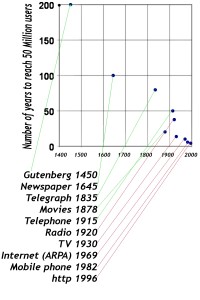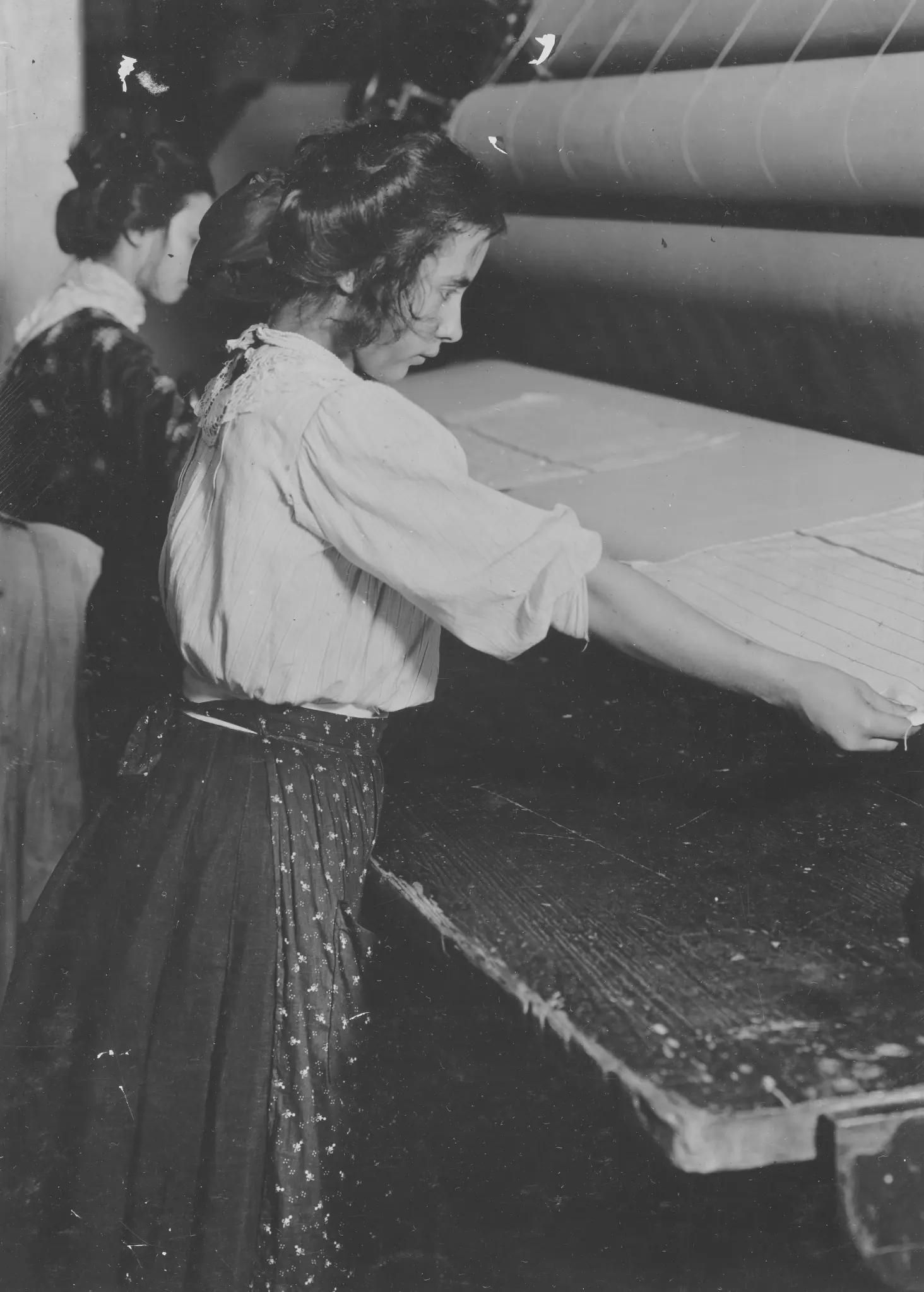Introduction
What type of life do you think Stephen W. Hawking would have experienced if he had lived in the early 19th Century? How many ideas have been lost over time, simply because there was no outlet for their expression?
New technologies are providing greater accessibility to the expressions of physically, mentally and socio-economically challenged individuals globally. These technologies promote learning within the boundaries of certain restrictions, and they provide a forum through which these individuals can share ideas. At the beginning of the 21st Century, Professor Peter David Blanck presented a statement to the US House of Representatives Subcommittee on the Constitution saying that, “increased accessibility to private Internet web sites and services may have yet undiscovered benefits to society.” (Blanck. 2000. p. 1).
At its very core, the Internet is a heterogeneous collaborative space, which encourages exploration and provides a medium through which people may share ideas. But what are we exploring and what sort of collaboration is worthy of this tool?
Every societal paradigm shift that benefited our species began with an idea. Thoughts and ideas translate easily into bits of information, and mass global-communication technologies provide an infrastructure to move those bits around the world within a matter of seconds. Ten years ago Nicholas Negroponte–who currently is spearheading the One Laptop Per Child Initiative –stated, “The change from atoms to bits is irrevocable and unstoppable […] small differences of yesterday can have suddenly shocking consequences tomorrow.” (Negroponte. 1995. p. 1). Negroponte, a professor and founder of the MIT Media Lab, defines a “bit”– written as a 1 or 0— as the “DNA of Information.”
Bits travel more efficiently, as atoms are quite massive–rendering them difficult and costly to transport. Bits also have a greater capacity to store information compared to chromosomes. At the speed of light, mass global-communication technology—referred to as MGC throughout this discussion–can deliver: ideas, literature, art,history, religion, music, educational curricula— or virtually everything not made of matter! Robert Austin, an associate professor at Harvard Business School, states, “This has the potential to supercharge innovation, because we can prototype more ideas and share them with each other much more rapidly.” (Grant. 2005. p. 1) Austin was directing his message to the for-profit sector, but it is the nonprofit sector that has a better track record for innovations. Small nonprofit associational-groups precipitated several major paradigm shifts throughout recorded history including: the civil rights movement, all religious denominations, and the formation of the United States, to highlight only three.
In order for a specific innovation to catch on—both good and bad–the information regarding this idea must become “habitually and conveniently” available to the public. According to Alexis de Tocqueville, “nothing but a newspaper can drop the same thought into a thousand minds at the same moment.” (Appendix II) What about a million minds at the speed of light? Within a matter of months, new technologies will be introduced that may change entire communities, hopefully for the better. With this research, I examined the importance of two common uses of MGC for nonprofits—E-Fundraising and E-Marketing. I also reviewed Ephilanthropy through the lens of one of its primary sub-sectors– Education. I then examined the premise that Bridging Social Capital is alive and well, and thriving on the Internet–providing diverse communities a space where they can habitually and conveniently promote ideas. If nonprofit organizations wish to remain a vital sector in modern culture, they must embrace these new technologies and harness its potential.
IUPUI Summer 2007 Introduction. E-Philanthropy: Current trends in the use of Mass Global Communication devices, and the opportunities they offer to nonprofit innovation.
By Amy Stark- Masters Candidate
What type of life do you think Stephen W. Hawking would have experienced if he had
lived in the early 19th Century? How many ideas have been lost over time, simply because there
was no outlet for their expression?
New technologies are providing greater accessibility to the
expressions of physically, mentally and socio-economically challenged individuals globally.
These technologies promote learning within the boundaries of certain restrictions, and they
provide a forum through which these individuals can share ideas. At the beginning of the 21st
Century, Professor Peter David Blanck presented a statement to the US House of Representatives
Subcommittee on the Constitution saying that, “increased accessibility to private Internet web
sites and services may have yet undiscovered benefits to society.” (Blanck. 2000. p. 1).
At its very core, the Internet is a heterogeneous collaborative space, which encourages exploration and provides a medium through which people may share ideas. But what are we exploring and what
sort of collaboration is worthy of this tool?
Every societal paradigm shift that benefited our species began with an idea. Thoughts
and ideas translate easily into bits of information, and mass global-communication technologies
provide an infrastructure to move those bits around the world within a matter of seconds. Ten
years ago Nicholas Negroponte–who currently is spearheading the One Laptop Per Child
Initiative–stated, “The change from atoms to bits is irrevocable and unstoppable […] small
differences of yesterday can have suddenly shocking consequences tomorrow.” (Negroponte.
1995. p. 1). Negroponte, a professor and founder of the MIT Media Lab, defines a “bit”– written
as a 1 or 0— as the “DNA of Information.”
Bits travel more efficiently, as atoms are quite massive–rendering them difficult and costly to transport. Bits also have a greater capacity to store information compared to chromosomes. At the speed of light, mass global-communication technology—referred to as MGC throughout this discussion–can deliver: ideas, literature, art,history, religion, music, educational curricula— or virtually everything not made of matter! Robert Austin, an associate professor at Harvard Business School, states, “This has the
potential to supercharge innovation, because we can prototype more ideas and share them with
each other much more rapidly.” (Grant. 2005. p. 1) Austin was directing his message to the for-profit
sector, but it is the nonprofit sector that has a better track record for innovations. Small nonprofit associational-groups precipitated several major paradigm shifts throughout recorded history including: the civil rights movement, all religious denominations, and the formation of the United States, to highlight only three.
In order for a specific innovation to catch on—both good and bad–the information
regarding this idea must become “habitually and conveniently” available to the public.
According to Alexis de Tocqueville, “nothing but a newspaper can drop the same thought into a
thousand minds at the same moment.” (Appendix II) What about a million minds at the speed of
light? Within a matter of months, new technologies will be introduced that may change entire
communities, hopefully for the better. With this research, I examined the importance of two
common uses of MGC for nonprofits—E-Fundraising and E-Marketing. I also reviewed EPhilanthropy
through the lens of one of its primary sub-sectors– Education. I then examined the
premise that Bridging Social Capital is alive and well, and thriving on the Internet–providing
diverse communities a space where they can habitually and conveniently promote ideas. If
nonprofit organizations wish to remain a vital sector in modern culture, they must embrace these
new technologies and harness its potential.



